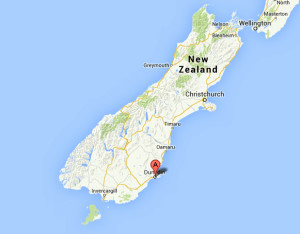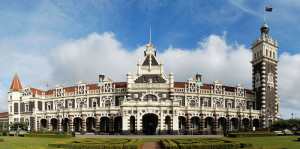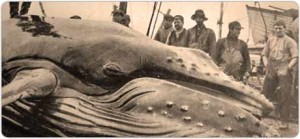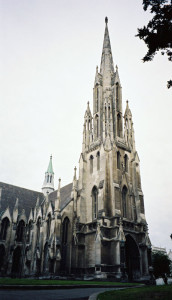Beautiful Dunedin
Country: New Zealand by Lisette
14-03-2005
 After hitting the far south and seeing the glacier in the west, it’s time to work my way back north via the east coast. The first city worth visiting after all the small places I saw for the past week or so was Dunedin.
After hitting the far south and seeing the glacier in the west, it’s time to work my way back north via the east coast. The first city worth visiting after all the small places I saw for the past week or so was Dunedin.
Dunedin, a name clearly derived from Scotland’s capital Edinburgh, is known for its steep streets and its old buildings. To me it is noteworthy because it stopped raining. *Just kidding*
The atmosphere and look of the city is very nice and more uplifting with its European feel and colourful houses. It is basically the perfect University Town and that was noticeable with all its bars and nightclubs. Besides partying, this city is noteworthy for its architectural feats.
Dunedin’s history
The harbour and surrounding hills are remnants of an extinct volcano and the suburbs extend into the hills and along the shore. Archaeological evidence clearly shows the first Māori people populated the area between AD 1250-1300. The population increased in the 17 th century with several pā (fortified settlement). Several different Māori tribes migrated here.
Central Dunedin had a settlement that was abandoned by 1826. Permanent European occupations started from 1831 onwards with the whaling station at Otago (now Otakou). In just a couple of years this became an important international whaling port. Unfortunately, this economic activity also meant epidemics that reduced the Māori population severely.
In 1852 Dunedin became the capital of the Otago Province and with the gold rush in 1861, the capital expanded so fast it became the largest city of New Zealand in just four years time. Before the recession hit the 1880s, many buildings and institutions were established, such as the first daily newspaper, medical school, art gallery, the First Church of Otago (see below) and others.
Then, early 1900s the railway station and other buildings were constructed. In the 1960s the Victorian era was unpopular and quite a few building were demolished. However, as of 1990 a slow population growth occurred and Dunedin re-invented itself as a “ heritage city ” with its main streets back in Victorian style.
 The gorgeous, Flemish train station
The gorgeous, Flemish train station
Dunedin was badly in need of a railway station in the late 1800s as a commercial and industrial centre that was so close to gold and coalfields. Meanwhile the hinterland was depending on livestock for its survival.
In 1901 the Minister of Railways proposed spending half a million pound per year for the next five years to construct a new railway station for Dunedin and a head office in Wellington. By this time, the city was outgrowing its third building (with the first being built in 1872). As soon as the railway went in use, it handled up to 100 trains a day!
The building has a central entrance hall and is flanked on both sides by long wings. It was meant to be built with bricks, but they used Kokanga basalt to keep costs down. The pillars on the Anzac Avenue façade were imported Scottish granite the whole station was roofed with Marseilles tiles.
Eventually the station was sold to the Dunedin City Council in the ‘90s and parts of the building presently serve as a restaurant, the New Zealand Sports Hall of Fame, and the Otago Art Society. Every Saturday morning, a produce market is held in the northern grounds. Lastly, the main platform is the world’s longest catwalk during the yearly fashion show.
The very First Church held only 200 people and was built close the former beach on lower High Street. It was erected within six months of Scottish settlers arriving in 1848. Two years later, a stone church was serving as a school, public lecture hall and even provincial council chamber. Both buildings were destroyed in a fire.
The present building was completed in six years and opened in 1873. The 60-metre spire is a ring of Whitechapel bells gifted in 1975. The spacious lawns are a raised platform with cliff faces on three sides that convicts worked hard on. It is built with creamy Oamaru stone weathering well, the church required extensive repairs in the 1950s and restoration in the 1990s.






Profile